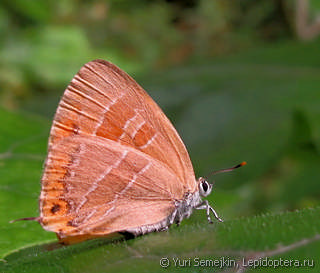Photo #6383: Japonica adusta
Imago

Base gallery. Lateral/Underside. Alive insect.
Photo: Yuri Semejkin. Image redone at the website. Identified by: Eugene Karolinskiy. Tentative identification
Date and time, location shooting/catching: 2010-07-19 00:00:00, Vladivostok, FEBRAS Botanical garden
Comments on this image
Your comment
Please, create an account or log in to add comments.
Other photos Japonica adusta







All large size images of Japonica adusta on one page
Please, create an account or log in to upload your photo
News
- 31.12.2024: Если нужно загрузить на сайт много фотографий
- 10.12.2024: Новое поле в «Поиске энтомологов»
- 05.12.2024: Insecta.pro maps: filter by taxon
New photos (22.02.2025)
Fresh from the community
- 10:56, P. Khramov: / → Pyrgus malvae / Nikolay Greb...
- 10:55, P. Khramov: Not identified → Lasiocampa quercus...
- 7:37, N. Grebennikov: Lasiocampa quercus....
Popular insects
Recommended blog topics
- ICZN Election of Commissioners
- The insects exhibition in Kotlas
- Interview with Alexander Zatakovoy, one of the wild Russian entomologists
- Butterflies and music: The Cure, The Caterpillar












